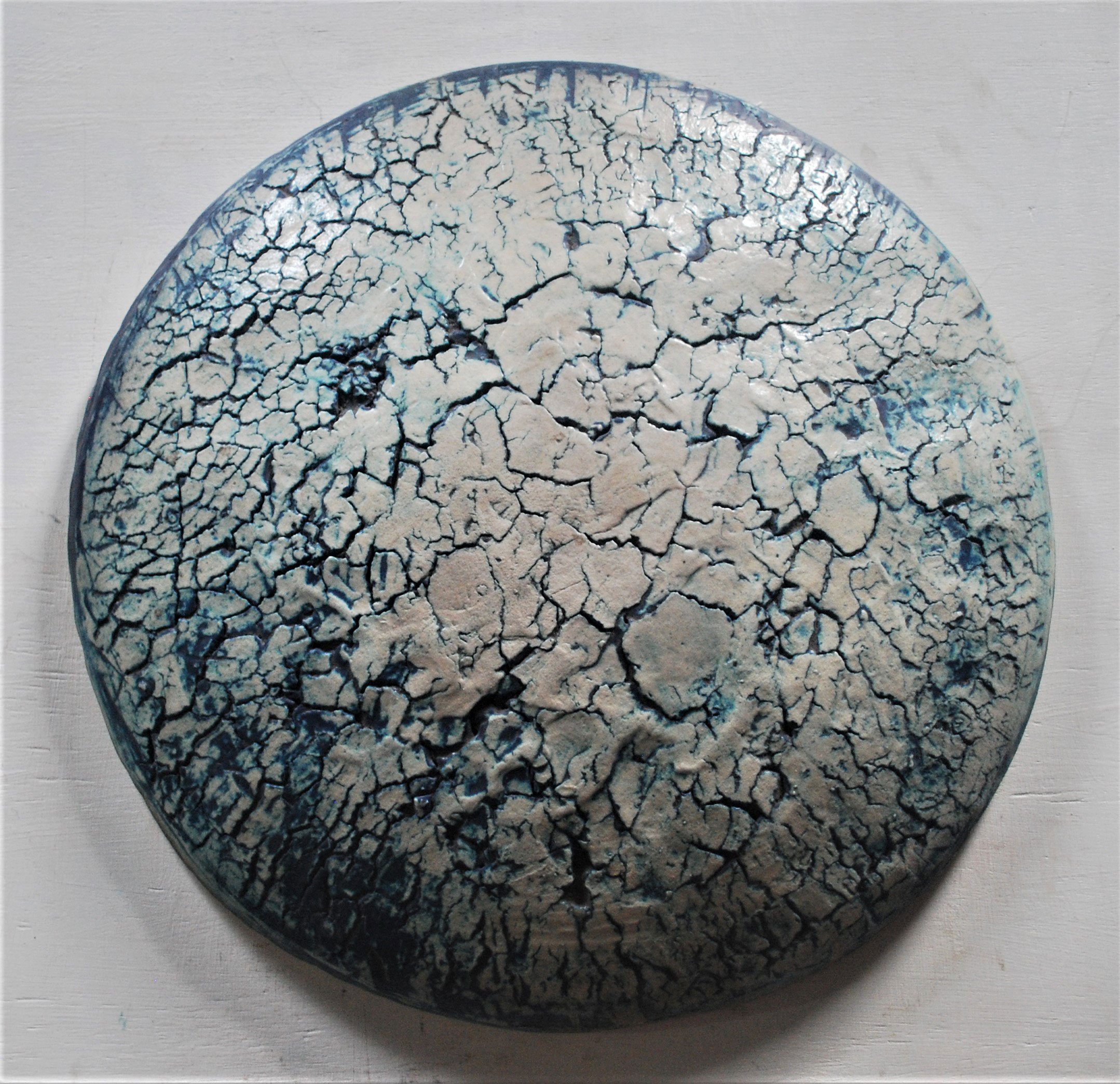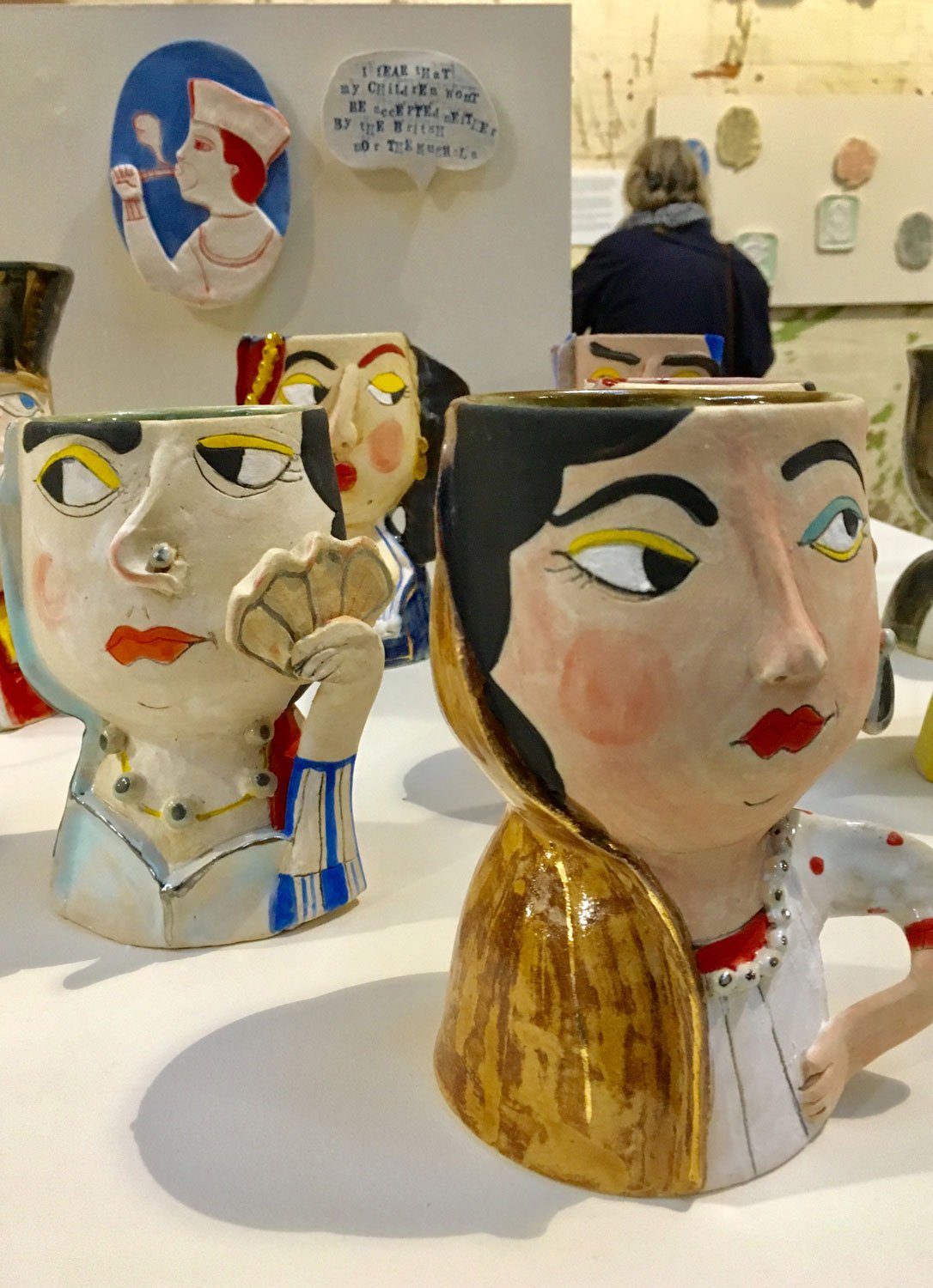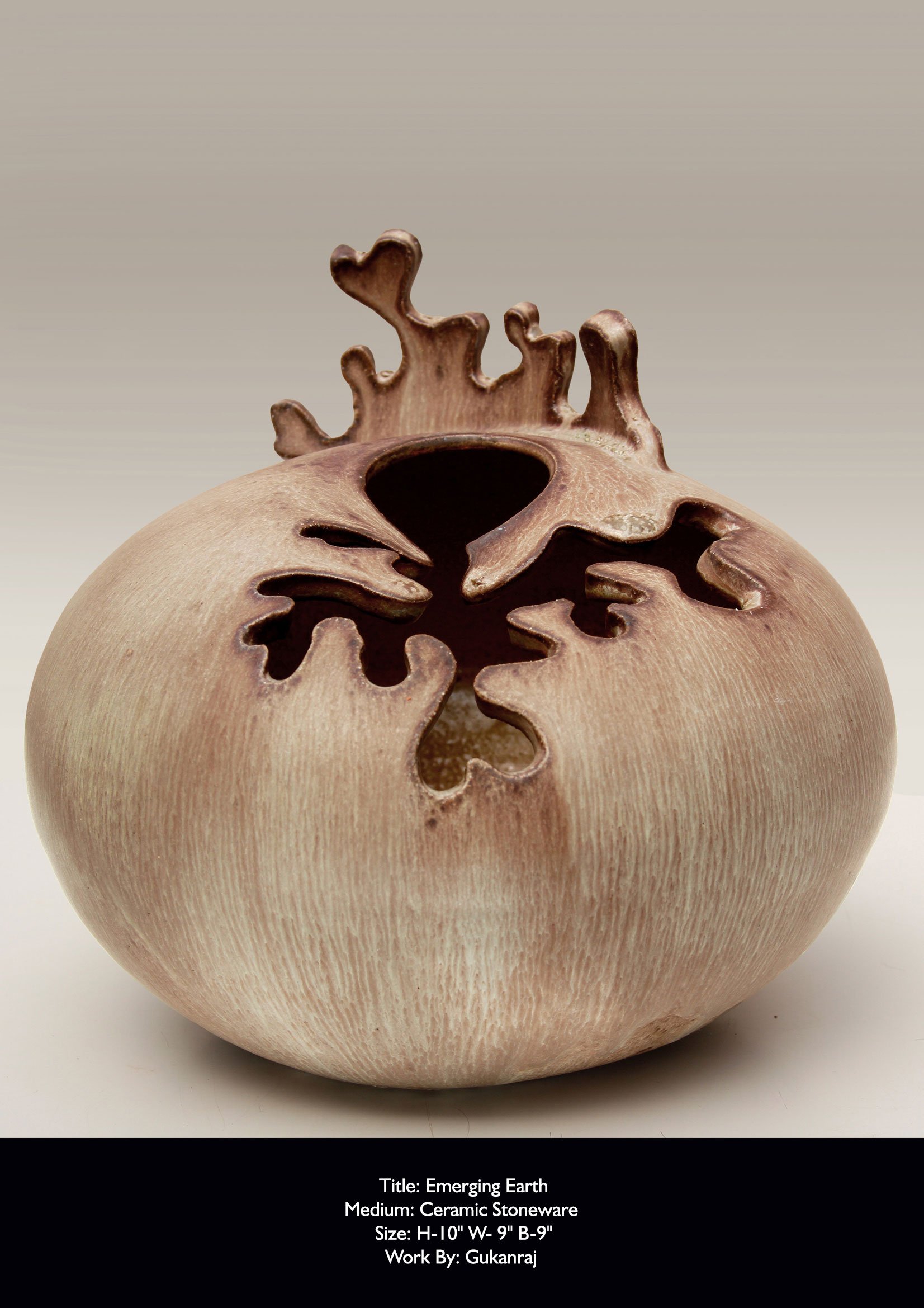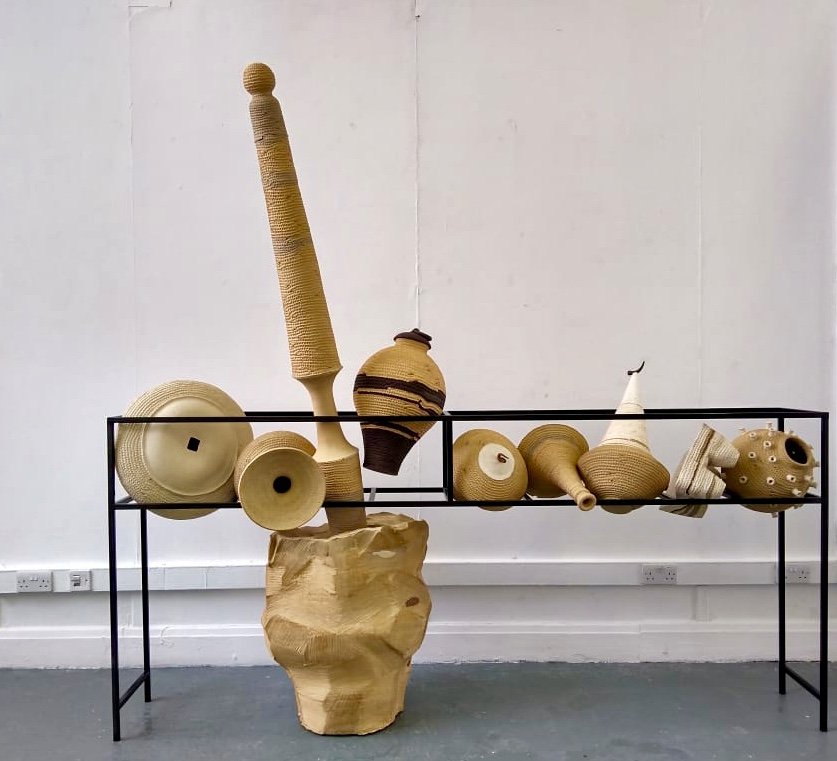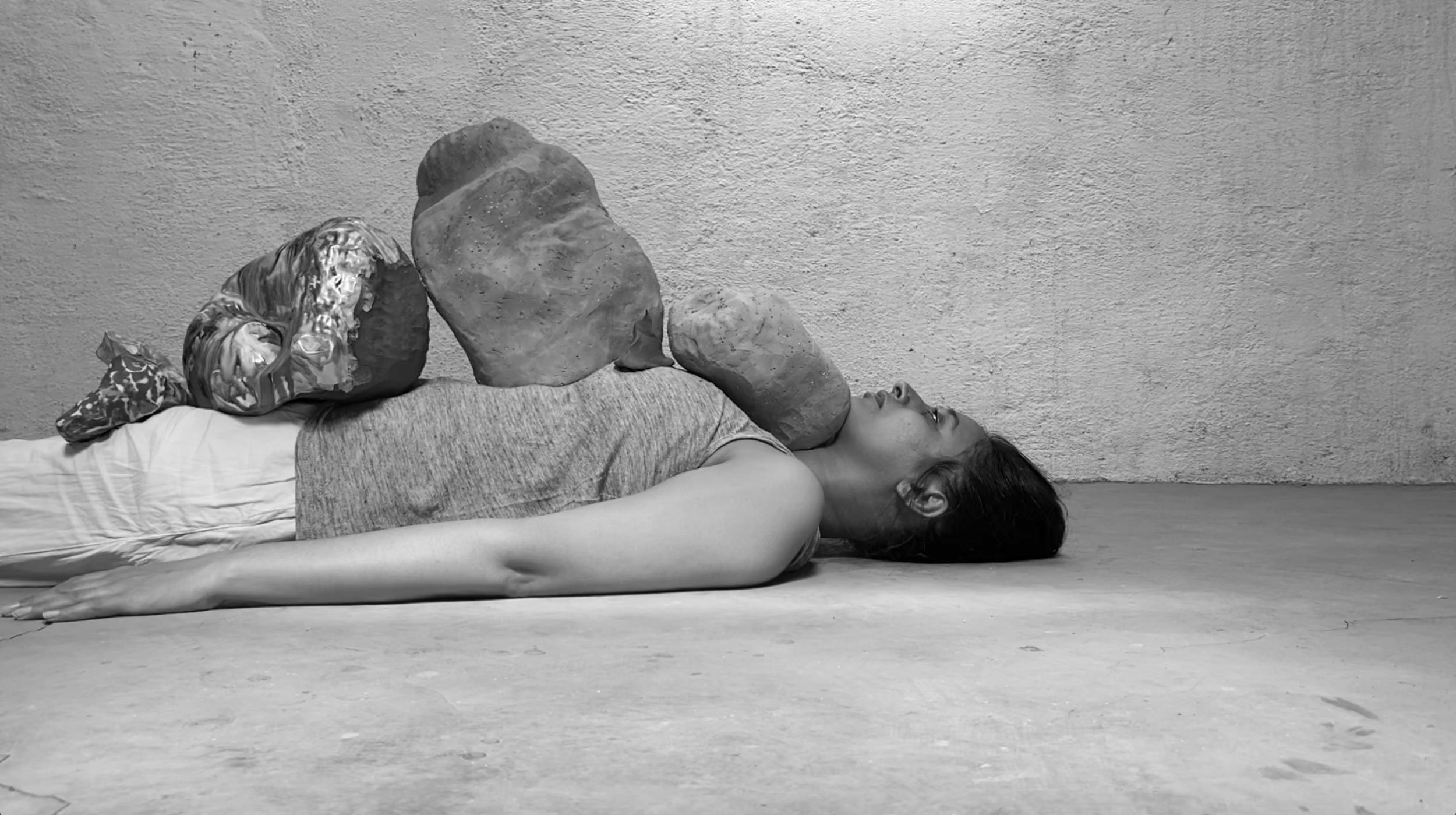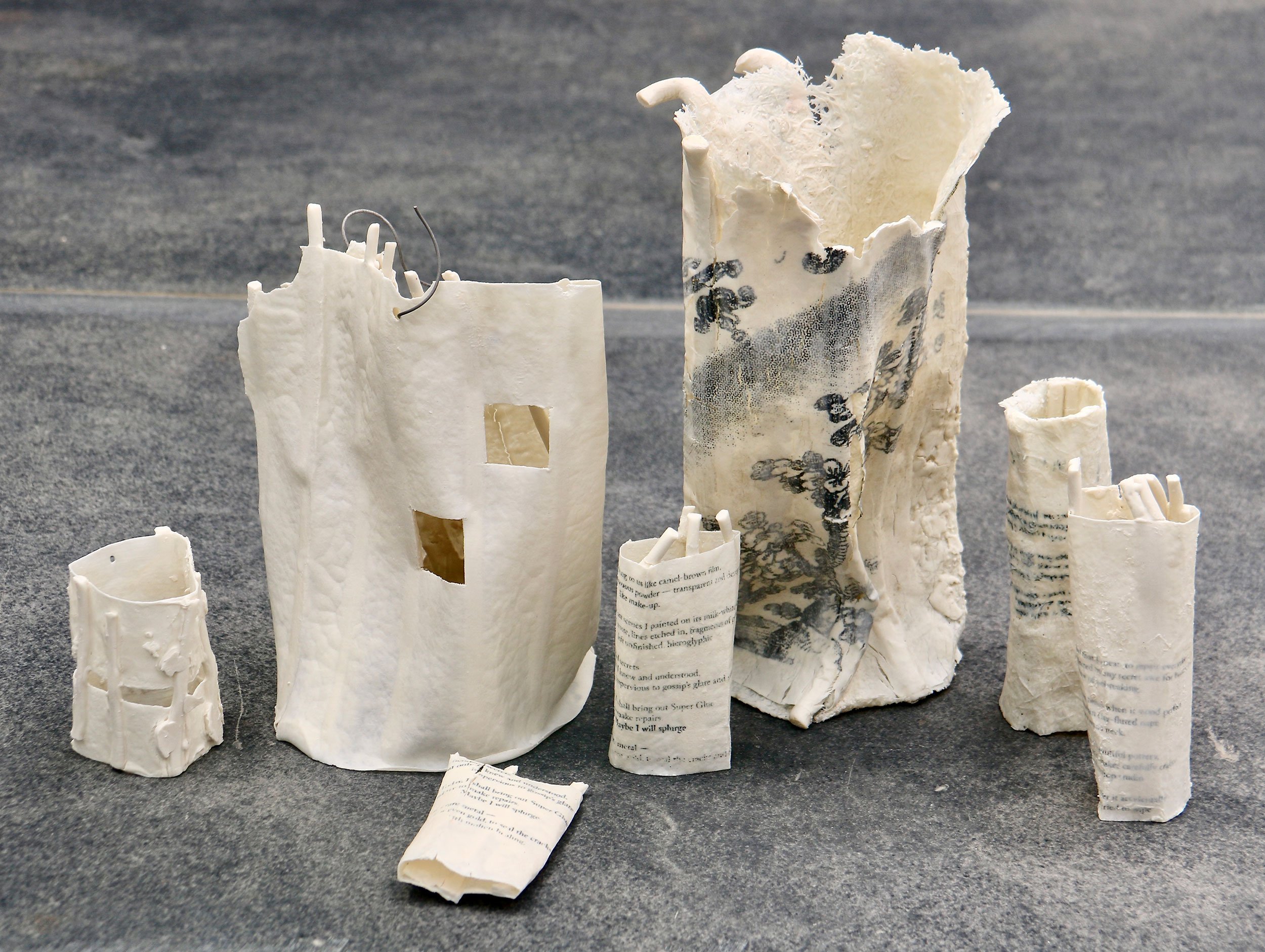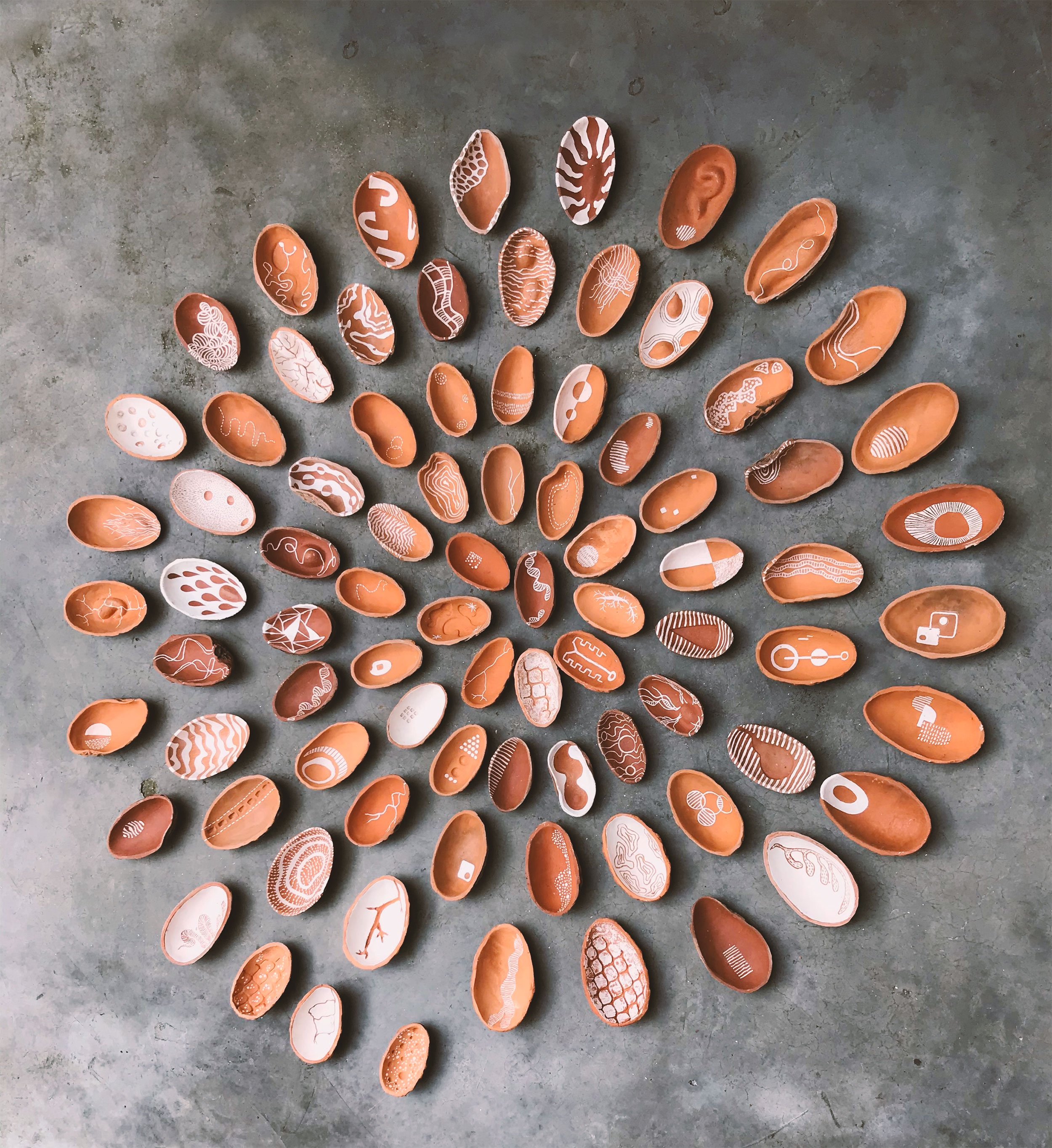Journeys of Clay and Fire
Here you will find information about projects that celebrate the achievements of the alumni. In January 2022, conversations began in earnest between the British Council and CWIT about fostering a new collaboration within the India/UK Together Season. These conversations have resulted in two new exhibitions to showcase the work of CWIT alumni. We are delighted that both exhibitions are also being curated by CWIT alumni; Kristine Michael’s exhibition the Journeys of Clay and Fire opened at the British Council in New Delhi on 29 September 2022 presenting the work of seven ceramic artists that have been supported by CWIT. The second exhibition will be curated by Latika Gupta and present the work of several visual artists that have received CWIT grants over past 20 years; this exhibition will open in January 2023. Both Kristine Michael and Latika Gupta are renowned in their own fields; CWIT is very pleased that they have agreed to collaborate with the Trust in this way.
The British Council’s India/UK Together Season is a year-long programme of cultural activity that commemorates the 75th Anniversary of Indian Independence and aims to strengthen the educational and cultural ties between the two countries.
Read the review of Journeys of Clay and Fire by Noor Anand Chawla for Open Magazine
the richness of art displayed at this exhibition can be credited to our country’s vast heritage and diversity
Journeys of Clay and Fire
Exhibition [September 2022]
Below you can find more information about the seven artists and the work presented at the British Council, New Delhi.
Shitanshu G Maurya
CWIT Visual Arts Scholar 2019
This series of works came in a succession from the earlier Scabrous Allure series, where I was playing with the interrelations of negative & positives. These are metaphors for the preserved remains of emotions and related observations in one's life. These imaginary forms of non- visual things are visual evidence of pre-existing thoughts which never got expressed previously in any form.
During my CWIT tenure, I spent time in Newcastle and in Devon which allowed me to immerse myself fully into the creative process which brought a different perspective to my works. The time spent with Sandy Brown in Devon opened up the creative process in depth, and I came up with new ways of thinking and working. During this time, I came up with the idea of 3d sketching. These work ‘The Sketchbook II’ is a result of these sketches and further developments. The works I created during my scholarship are a culmination of my time and experience in a new place, atmosphere, surrounded by new people and a new culture. This is where I have tried to amalgamate my previous notions to new creative instincts.
Shitanshu G Maurya - image from his exhibition at the gallery at Newcastle University, 2019
Abhay B Pandit
CWIT Visual Arts Scholar 2005
I have grown up around the coastline of Mumbai and my home is just few km. away from the sea. I have dreamt since childhood about exploring the ocean floor and its unfathomable treasures. In my work, I try to recreate the abstract textures of the ocean floor. The ceramic surface is perfect to depict my visualisation of the earth’s atmosphere with a bird’s eye view from space. I have frozen those blue, white and grey skies and the atmospheric gases with textured clay and engobes in an abstract language using my clay material.
I was a recipient of the CWIT grant in 2005 and studied under well-known ceramic artist Peter Fraser Beard in Warwickshire. He encouraged me to explore clay in terms of texture, form and its sculptural qualities. On my return to India, I was able to incorporate British ceramic sensibilities with my Indian aesthetics and the results continue to be very promising. I shared all my learning in the UK with my ceramic artist father and my wife, Shri B R Pandit and Khushboo Pandit. This has enhanced the ceramic creativity in my pottery family. The scholarship had a very strong impact on my ceramic art language and it gave me an international dimension and perspective. This scholarship shaped and moulded my career and established me firmly in India.
Abhay Pandit - Fathom
K Gukan Raj
CWIT Visual Arts Scholar 2013
I travel with the clay following its rhythm. The path follows a never-ending pursuit of the balance between form and flow. Nature always carves the earth, each and every second. Without rest, it follows a path though seas, rivers and rain creating a flow of earth. The natural elements each in their own right leave a lasting mark in these carvings. Fire - like a volcano with lava flow melting, carving and creating depth; Air - like a cyclone creating with the full force of a storm; Earth - like the earthquakes moving and shaping the Earth; Sky - like clouds and rainbow surrounding the Universe.
All leading to a point of beauty. I travel within and express this beauty in my work.
I started my ceramic journey in 1999 in Chennai. In 2013 I received a CWIT grant and went to the UK to do an apprenticeship with Sandy Brown and Micki Schloessingk. It was a great learning process with both artists as I learnt different making techniques, lots of glazing and firing processes. It was a good experience for me to travel and visit other artists in the UK such as Svend Bayer among others. I also attended an international ceramics conference at the time. Subsequently, there have been a lot of development in my working and firing methods today.
K Gukan Raj - Emerging Earth
Shruti Bansal
CWIT Visual Arts Scholar 2015
We all experience the inevitability of life, and death within life. It is a vicious circle that no one can escape, leaving behind a vacuum after we lose people close to us. Having experienced it personally, it inspired me to start exploring the metaphorical nature of containment and transformation as it may affect life and death within the nature of process and materiality.
I was awarded the Charles Wallace India Trust grant in September 2015 for pursuing an MA degree in ceramics from Cardiff School of Art and Design. Here, I worked with Peter Castle, Claire Curneen & Mehnaz Shah. This course changed my whole approach towards art. It was a multi-disciplinary approach based on process, research, exploration, materiality, artist interactions and critical thinking. This resulted in creating a symbiotic relationship between the material and myself. For years I had been working towards developing my own signature style of work. This exposure gave me my voice and a new language to my work which I still use in my practice now.
Shruti Bansal - Memoirs of Transformation
Ela Mukherjee
CWIT Visual Arts Scholar 2008
I enjoy the visual and tactile quality of clay as a medium of expression. At times I juxtapose other materials like metal, textile, and glass along with clay. My work is about repetitive sequencing with separate elements to form a cohesive sculptural group. Though small in scale, once installed, they often command a large space. I like to play around with the small forms in different layouts each time I display the work.
The emphasis on form is primary to me as it can be from nature or man- made elements. This series is inspired by my reflection on the incredibly rich heritage of Indian architecture and a tribute to its diverse influences With rapid urbanisation and climate change, the question of cultural preservation is becoming increasingly pertinent. I fire my works in different temperatures and the use of colour is minimal in my works.
My residency at Newcastle University in 2008 for four months was a very enriching experience as it changed the trajectory of my art practice to a great extent. The stay allowed me to refresh and expand my horizons. The solo show offered to me at the end made me think differently as the gallery had a large space and I intended to activate that. I started doing small forms in multiples to create large scale installations. The three works I exhibited there were well appreciated and I enjoyed the process thoroughly. My present art practice very often involves similar multiple piece installations.
Ela Mukherjee - Meanderings
Neha Kudchadkar
A surname. An inheritance. An indicator of history, of beginnings, of roots?
The exercise was to live in Kudchade, the town I derive the second half of my name from. To collect stories, places, meaning. As the Zuari flows through my hands, with it flow family and place histories. Distorted, uncertain, unsettled and volatile. Rich, celebratory, significant and beautiful.
I see myself as a maker. Making is research, experience, knowing, choreography, is a performance. Clay is the medium through which I think. I understand the material. I am interested in its physicality, its immediacy, in its fragility. I am also interested in the social, political, technical and geological history of ceramics.
This video is part of a recurring project – Auto Ethnography Through Objects – which marks my body in the socio-political space it occupies through objects, at different points of my life. Weightlifter documents a difficult, precarious, uncomfortable moment in time, made heavy by grief, breakdowns, depression and helplessness. It records the guilt and struggle of breathing as the world collapses around myself.
In my work, I explore the body as object. As a tool for the making as well as the experience of objects. Through my process, and through the objects themselves, I question the inherent knowledge of the body versus its social and physical conditioning. The objects tell stories of their making, stories (and secrets) of the body. The body has often been likened to clay. The body as ‘that which has emerged from the earth and that will eventually become one with it’. Can these boundaries be erased? Can my body become sculpture? Can gesture become sculpture?
I was awarded the Charles Wallace scholarship at a critical point in my career. I had been working as an independent artist in Baroda for a few years and was striving to make a shift in the way I thought about my work. I wanted a change of pace in place and was seeking professional input. I craved exposure to the art scene outside of the country and to challenge my own perception of my medium and practice. My apprenticeship in the studios of Regina Heinz and Julian Stair enabled me to make these shifts. As much as I learnt new technical skills, I refined my sensibilities as an artist. I attended several lectures and symposia, and the introduction to that nature of scholarship was revitalising. My time in London was a time of discovery and growth and a stepping stone to many events that followed.
Neha Kudcharkar - Weightlifter
Shirley Bhatnagar
I use narrative infused with humour to comment on social and political issues built upon historical study and research. The sense of play and hilarity coupled with storytelling and illustrations now forms the backbone of my work. My work inspired from ancient pottery infused with anthropomorphic details has been widely recognized and has been an inspiration for many.
My studio Irregular Beauty is known for high quality, fantastical objects aimed at elevating our daily experiences.
In 2019, I was awarded the CWIT grant in collaboration with the Indian Ceramics Triennale and the British Ceramics Biennial. I went to Stoke on Trent, the pottery centre of the UK as my project was inspired by William Dalrymple's 'The White Mughals’ which recounts the story of a short period when the East India Company officers came to India not only for trade but also settled and got married to Indian women and adopted the Mughal mannerisms of clothes, language, food etc. I also looked at characters beyond that period and the style of the English Toby jug and flatbacks which are small sculptures based on actual people of the time. I recreated them in my own way as there was no visual reference on the intermingling of the two cultures.
Shirley Bhatnagar - White Mughals series 2019
Shirley Bhatnagar - Indian Toby

